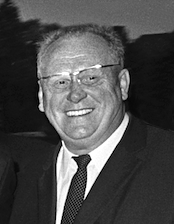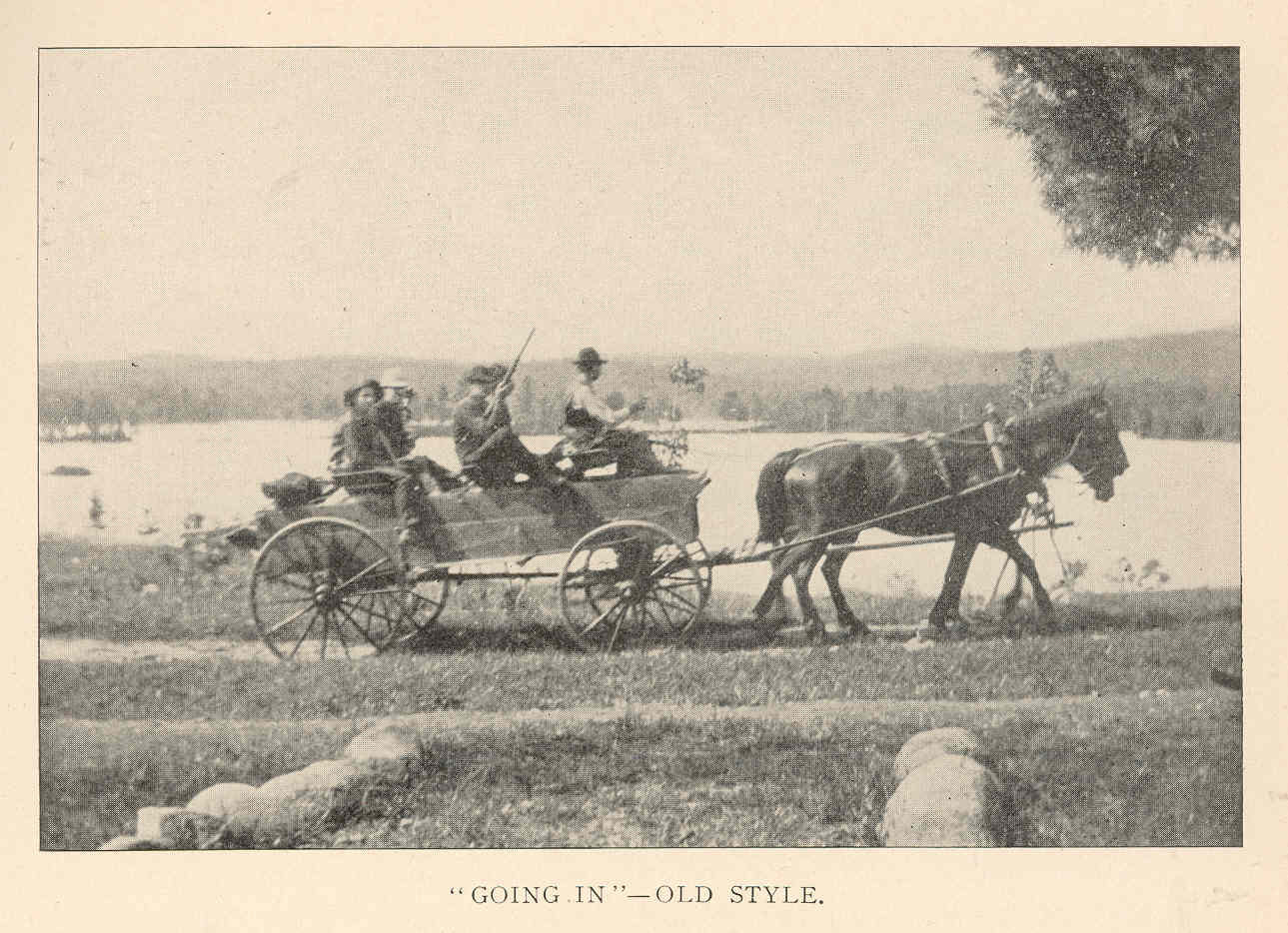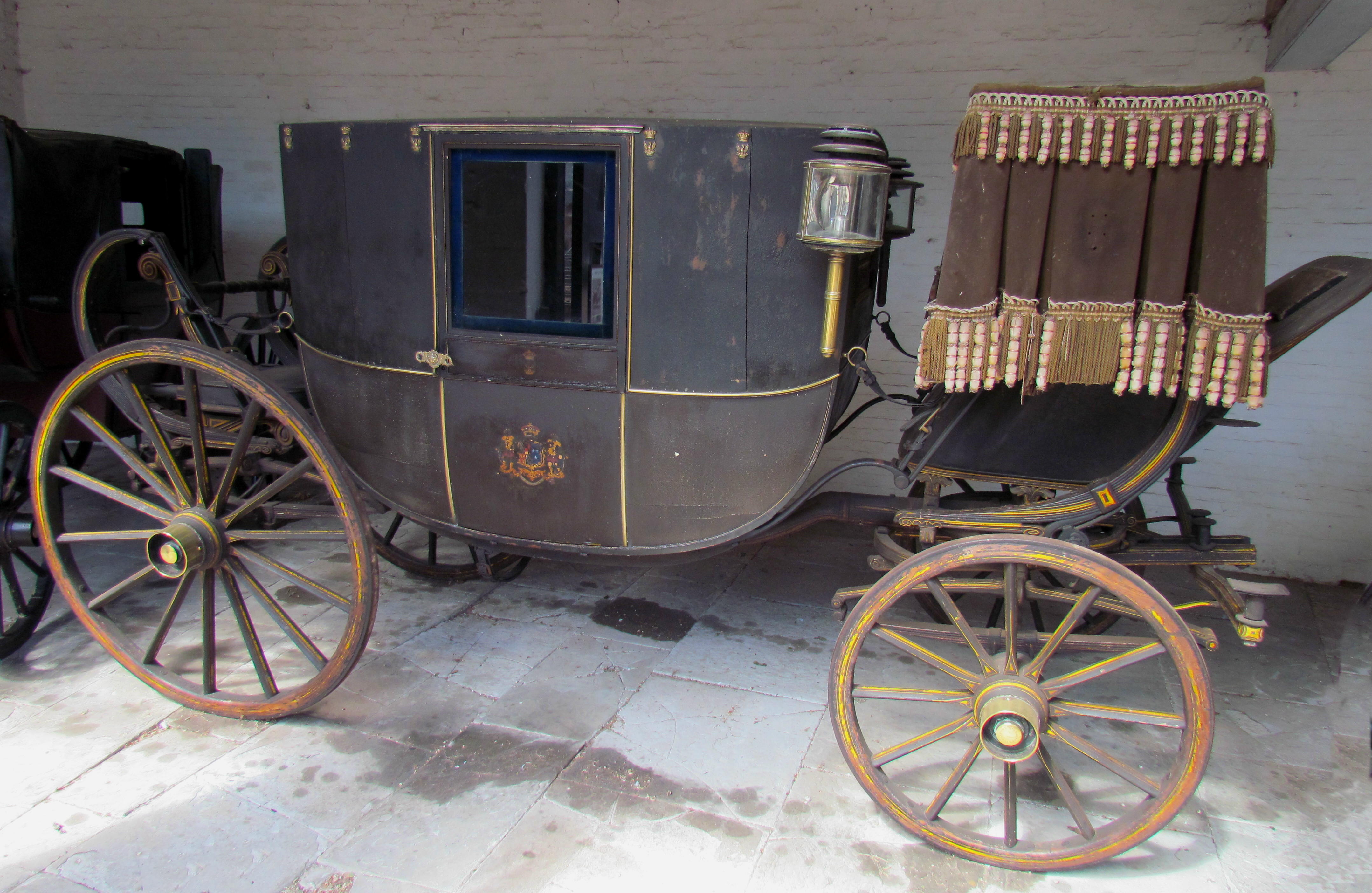|
Rolls-Royce Phantom III
The Rolls-Royce Phantom III was the final large pre-war Rolls-Royce. Introduced in 1936, it replaced the Phantom II and it was the only V12 Rolls-Royce until the 1998 introduction of the Silver Seraph. 727 V12 Phantom III chassis were constructed from 1936 to 1939, and many have survived. Although chassis production ceased in 1939 (with one final chassis being built in 1940), cars were still being bodied and delivered in 1940 and 1941. The last car, though the rolling chassis was completed in 1941, was not delivered with a body to its owner until 1947. The Phantom III was the last car that Henry Royce worked on – he died, aged 70, a year into the Phantom III's development. Engineering The III is powered by an aluminium-alloy V12 engine of 447in³ (7.32L), having a bore of 3.25 inches (82.5 mm) and a stroke of 4.5 inches (114.3 mm). It is a pushrod engine with overhead valves operated by a single camshaft in the valley between the cylinder banks. Early cars ... [...More Info...] [...Related Items...] OR: [Wikipedia] [Google] [Baidu] |
Rolls-Royce Limited
Rolls-Royce was a British luxury car and later an aero-engine manufacturing business established in 1904 in Manchester by the partnership of Charles Rolls and Henry Royce. Building on Royce's good reputation established with his cranes, they quickly developed a reputation for superior engineering by manufacturing the "best car in the world". The business was incorporated as Rolls-Royce Limited in 1906, and a new factory in Derby was opened in 1908. The First World War brought the company into manufacturing aero-engines. Joint development of jet engines began in 1940, and they entered production. Rolls-Royce has built an enduring reputation for development and manufacture of engines for defence and civil aircraft. In the late 1960s, Rolls-Royce was adversely affected by the mismanaged development of its advanced RB211 jet engine and consequent cost over-runs, though it ultimately proved a great success. In 1971, the owners were obliged to liquidate their business. The useful p ... [...More Info...] [...Related Items...] OR: [Wikipedia] [Google] [Baidu] |
Leaf Spring
A leaf spring is a simple form of spring commonly used for the suspension in wheeled vehicles. Originally called a ''laminated'' or ''carriage spring'', and sometimes referred to as a semi-elliptical spring, elliptical spring, or cart spring, it is one of the oldest forms of vehicle suspension. A leaf spring is one or more narrow, arc-shaped, thin plates which are attached to the axle and chassis in a way that allows the leaf spring to flex vertically in response to irregularities in the road surface. Lateral leaf springs are the most commonly used arrangement, running the length of the vehicle and mounted perpendicular to the wheel axle, but numerous examples of transverse leaf springs exist as well. Leaf springs can serve multiple suspension functions: location, springing, and to some extent damping as well, through interleaf friction. However, this friction is not well controlled, resulting in stiction and irregular suspension motions. For this reason, some manufacturers have ... [...More Info...] [...Related Items...] OR: [Wikipedia] [Google] [Baidu] |
Gert Fröbe
Karl Gerhart "Gert" Fröbe (; 25 February 1913 – 5 September 1988) was a German actor. He was best known in English-speaking countries for his work as Auric Goldfinger in the James Bond film '' Goldfinger'', as Peachum in ''The Threepenny Opera'', as Baron Bomburst in '' Chitty Chitty Bang Bang'', as Hotzenplotz in '' Der Räuber Hotzenplotz'', General Dietrich von Choltitz in '' Is Paris Burning?'' and Colonel Manfred von Holstein in ''Those Magnificent Men in Their Flying Machines''. Early life and education Fröbe was born in Oberplanitz, today part of Zwickau. He was initially a violinist, but he abandoned it for Kabarett and theatre work. He joined the Nazi Party in 1929 at the age of 16 and left in 1937. In September 1944, theatres in Germany were closed down and Fröbe was drafted into the German Army, where he served until the end of the war. After his party membership became known after World War II, Israel banned Fröbe's films until Mario Blumenau, a Jewish s ... [...More Info...] [...Related Items...] OR: [Wikipedia] [Google] [Baidu] |
Auric Goldfinger
Auric Goldfinger is a fictional character and the main antagonist in Ian Fleming's 1959 seventh ''James Bond'' novel, '' Goldfinger'', and the 1964 film it inspired (the third in the ''James Bond'' series). His first name, Auric, is an adjective meaning "of gold". Fleming chose the name to commemorate the architect Ernő Goldfinger, who had built his home in Hampstead, near Fleming's; it is possible, though unlikely, that he disliked Goldfinger's style of architecture and destruction of Victorian terraces and decided to name a memorable villain after him. According to a 1965 ''Forbes'' article and ''The New York Times'', the Goldfinger persona was based on gold mining magnate Charles W. Engelhard, Jr. In 2003, the American Film Institute declared Auric Goldfinger the 49th-greatest villain in the past 100 years of film. In a poll on IMDb, Auric Goldfinger was voted the most sinister James Bond villain, beating (in order) Ernst Stavro Blofeld, Dr. No, Max Zorin and Emilio Lar ... [...More Info...] [...Related Items...] OR: [Wikipedia] [Google] [Baidu] |
Shooting Break
Shooting brake (sometimes mis-identified as "shooting break") is a car body style which originated in the 1890s as a wagon, horse-drawn wagon used to transport shooting parties with their equipment and game (food), game. The first automotive shooting brakes were manufactured in the early 1900s in the United Kingdom. The vehicle style became popular in England during the 1920s and 1930s. They were produced by vehicle manufacturers or as conversions by coachbuilders. The term was used in Britain interchangeably with estate car from the 1930s but has not been in general use for many years and has been more or less superseded by the latter term. The term has evolved to describe cars combining elements of both station wagon (estate) and coupé body styles, with or without reference to the historical usage for shooting parties. A shooting brake is a subcategory of a station wagon, based on a coupé rather than a sedan. Being based on four-door coupés is why manufacturers call models ... [...More Info...] [...Related Items...] OR: [Wikipedia] [Google] [Baidu] |
Hearse
A hearse is a large vehicle, originally a horse carriage but later with the introduction of motor vehicles, a car, used to carry the body of a deceased person in a coffin at a funeral, wake, or memorial service. They range from deliberately anonymous vehicles to heavily decorated vehicles. In the funeral trade of some countries hearses are called funeral cars or funeral coaches. History The name is derived, through the French herse, from the Latin , which means a harrow. The funeral hearse was originally a wooden or metal framework, which stood over the bier or coffin and supported the pall. It was provided with numerous spikes to hold burning candles, and, owing to the resemblance of these spikes to the teeth of a harrow, was called a hearse. Later on, the word was applied, not only to the construction above the coffin, but to any receptacle in which the coffin was placed. Thus from about 1650Oxford English Dictionary Online accessed 26 January 2018 it came to denote the vehi ... [...More Info...] [...Related Items...] OR: [Wikipedia] [Google] [Baidu] |
Thrupp & Maberly
Thrupp & Maberly was a British coachbuilding business based in the West End of London, England. Coach-makers to Queen Victoria they operated for more than two centuries until 1967 when they closed while in the ownership of Rootes Group. Mr Thrupp This family coachbuilding firm was started near Worcester about 1740. The founder's son, Joseph Thrupp (died London 1821), came to London about 1765 and ran a coach making business in George Street, Grosvenor Square. Though his best known coachbuilder descendant was George Athelstane Thrupp (1822-1905) Joseph left a number of notable descendants* Arthur Thomas Thrupp (1828-1889), Royal Navy officer * Dorothea Ann Thrupp (1777-1847), writer * Frederick Thrupp (1812-1895), sculptor * John Thrupp (1817-1870), historian * Joseph Francis Thrupp (1827–1867), churchman and academic who were not coach, carriage or harness makers. Joseph's London business was continued by his nephew Henry East Thrupp (1774-1852),Thrupp, Henry East, son of ... [...More Info...] [...Related Items...] OR: [Wikipedia] [Google] [Baidu] |
Hooper (coachbuilder)
Hooper & Co. was a British coachbuilding business for many years based in Westminster London. From 1805 to 1959 it was a notably successful maker, to special order, of luxury carriages, both horse-drawn and motor-powered. Founding The company was founded as Adams and HooperCity of Westminster Archives Centre: Hooper and Co Records: ref 738. Administrative history: Hooper & Co, coachmakers, began trading in 1846 at 28 Haymarket. However, the company can be traced back to 1807 when J and G Adams opened a coachmaking business at 57 Haymarket. In 1811, George Adams moved to 28 Haymarket, joined later by George Hooper in 1833. In 1846, the company was renamed Hooper & Co. In 1867 the company moved their premises to Victoria Street, then, to 54 St James's Street in 1897. Hooper and Co. closed in 1959, by which time they were a subsidiary company of the Birmingham Small Arms Company. in 1805 and held a royal warrant from 1830, building elegant horse-drawn carriages, supplying the ... [...More Info...] [...Related Items...] OR: [Wikipedia] [Google] [Baidu] |
Park Ward
Park Ward was a British coachbuilder founded in 1919 which operated from Willesden in North London. In the 1930s, backed by Rolls-Royce Limited, it made technical advances which enabled the building of all-steel bodies to Rolls-Royce's high standards. Bought by Rolls-Royce in 1939, it merged with H. J. Mulliner & Co. in 1961 to form Mulliner Park Ward. History Park Ward was founded in 1919 by William MacDonald Park and Charles Ward; they had worked together at F.W. Berwick Limited, the makers of Sizaire-Berwick cars. They built their first Rolls-Royce body in 1920. After producing bodies for a variety of cars in the early 1920s, Park Ward became particularly associated with W O Bentley's new business, manufacturing their chassis nearby at Cricklewood. In 1922, they were asked by Rolls-Royce to take part in a scheme to make standard bodies for their small Twenty model, but the project was abandoned, although they did build bespoke bodies for Rolls-Royce customers exhibiting a ... [...More Info...] [...Related Items...] OR: [Wikipedia] [Google] [Baidu] |
Barker (coachbuilder)
Barker & Co. was a coachbuilder, a maker of carriages and in the 20th century bodywork for prestige cars. History Founded in London in 1710Coventry Archives: ref. PA1356. Barker & Co. Administrative history: Barker and Company, founded 1710, address Chandos Street, London. Reformed as Barker & Company (Coachbuilders) in 1905. Taken over by Hooper & Company (Coachbuilders), St James Street, London. The firm was taken over by B.S.A. and assigned to Daimler (a B.S.A. subsidiary) c.1940 by a guards officer it more recently traded as Barker & Co. Limited. After the 1920s Barker & Co seemed to be unable to keep up with advances in the use of light alloys for framing. Requests for sturdier bodies were met by using heavier components which hampered the finished product's performance. The company fell into receivership in 1938 and its brand name and business were taken over by its long-term rival Hooper & Co which in its turn was taken over by Daimler in 1940 and so became part of t ... [...More Info...] [...Related Items...] OR: [Wikipedia] [Google] [Baidu] |
Coachbuilder
A coachbuilder or body-maker is someone who manufactures bodies for passenger-carrying vehicles.Construction has always been a skilled trade requiring a relatively lightweight product with sufficient strength. The manufacture of necessarily fragile, but satisfactory wheels by a separate trade, a wheelwright, held together by iron or steel tyres, was always most critical. From about AD 1000 rough vehicle construction was carried out by a ''wainwright'', a wagon-builder. Later names include ''cartwright'' (a carpenter who makes carts, from 1587); ''coachwright''; and ''coachmaker'' (from 1599). Subtrades include ''wheelwright'', ''coachjoiner'', etc. The word ''coachbuilder'' first appeared in 1794. ''Oxford English Dictionary'' 2011 Coachwork is the body of an automobile, bus, horse-drawn carriage, or railway carriage. The word "coach" was derived from the Hungarian town of Kocs. Coachbuilt body is the British English name for the coachbuilder's product. ''Custom body'' is th ... [...More Info...] [...Related Items...] OR: [Wikipedia] [Google] [Baidu] |
Paris - Retromobile 2014 - Rolls Royce Phantom III - 1937 - 001
Paris () is the capital and most populous city of France, with an estimated population of 2,165,423 residents in 2019 in an area of more than 105 km² (41 sq mi), making it the 30th most densely populated city in the world in 2020. Since the 17th century, Paris has been one of the world's major centres of finance, diplomacy, commerce, fashion, gastronomy, and science. For its leading role in the arts and sciences, as well as its very early system of street lighting, in the 19th century it became known as "the City of Light". Like London, prior to the Second World War, it was also sometimes called the capital of the world. The City of Paris is the centre of the Île-de-France region, or Paris Region, with an estimated population of 12,262,544 in 2019, or about 19% of the population of France, making the region France's primate city. The Paris Region had a GDP of €739 billion ($743 billion) in 2019, which is the highest in Europe. According to the Economist Intelligenc ... [...More Info...] [...Related Items...] OR: [Wikipedia] [Google] [Baidu] |

.jpg)
.jpg)





.jpg)


